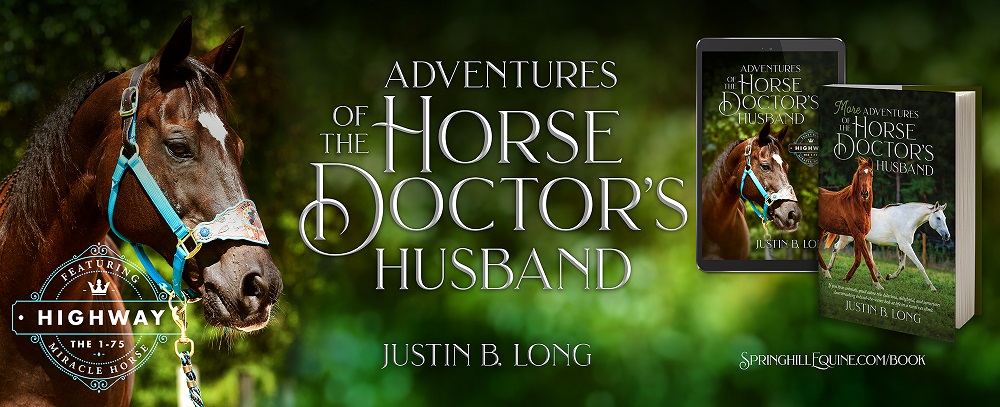Tuesdays with Tony
If you’ve ever visited Springhill Equine, you know I can usually be found in one of two places: the front porch, or the front counter. From this vantage point I watch Joe The Courier, and Tony The UPS Guy drop off packages just about every day. I’m partial to Tony for the obvious reason that his mother named him correctly. While the empty boxes are the highlight of my day, this week I’m going to talk about some of what’s in those boxes: drugs. Not the illegal kind, rather the kind my Docs use every day to help horses stay healthy. This is no small task with the propensity of horses towards self harm. Anyway, drugs. There are some very important things you should know about where they come from, and how my Docs know they can trust that the drugs they’re using are safe.
The FDA
Anything that would like to be called a pharmaceutical has to be approved as one by the FDA. You don’t just get to wake up in the morning and call my hairball a drug. You have to go through a process first, and spoiler alert, my hairball is unlikely to get approved as a drug. First, you have to be on a list of drugs the FDA keeps called the United States Pharmacopoeia. If you are, you can then proceed to prove that your version doesn’t violate any patents held by drug companies, that it has in it what it says it does, in the amount it says it does, and that it doesn’t have stuff in it it’s not supposed to. Makes sense. And seems like a darn good idea to this cat.
If you are a new drug, things are a little trickier, and more expensive. Now, some people like to start flinging litter over the expense issue of new drugs. I’m not going to debate that side of things. I’m a cat. Money means nothing to me. We’re going to stick to the process and why it exists. If you are a new drug, and very specifically a new animal drug, you have to prove you’re safe in all the species you intend to give that new drug to. For example, if you are licensing Adequan for horses, you need to show that it’s safe in horses. You haven’t shown that it’s safe in dogs, so you can’t say it’s okay for dogs until you show it’s safe for them, too. It gets even trickier if you’re saying it’s safe for cows that are going to be eaten by humans. Then you have to show that it’s safe for cows, and safe for humans eating those cows. All of this seems like a really good idea to this cat. I want to know that the drugs my Docs are using are safe, and have in them what they say they will.
Loopholes
That part where I talked about approval costing a lot of money. Well, there are some humans out there who would like to avoid that. The way they do that with a drug is by getting it labeled as a medical device. Tony, you ask, what is a medical device, and how is it different from a drug? Well, a drug relies on a chemical process happening in or on the body to work. A device works just by being there. A device is a needle, or a syringe, or a catheter. This definition has been used broadly to apply to things put on horses as well. Things like wound lavages that have ingredients similar to Adequan and Legend. That’s right. A bunch of those products out there that claim to be just like Adequan or just like Legend are actually regulated as medical devices instead of drugs. This means they are sterile, and must follow certain packaging requirements to ensure they are what they say they are. They don’t have to show that they are safe to give in any other way than what the packaging says. What am I trying to say? That “generic” labeled as a wound lavage has not been tested for intravenous or intramuscular injection in the same way Adequan and Legend have been. They also aren’t held to the same standards of consistency as a product labeled a drug. Overall, though, a medical device is at the very least sterile, and is what it says it is.
The Mother of All Loopholes
The supplement. Things labeled supplements are the Wild West of the pharmaceutical world. No one makes sure they are what they say they are. Supplement is also reserved for things you feed to your horse, not things you inject into them. If you are injecting something labeled as a supplement, you have absolutely NO guarantee that it 1) Is what it says it is, and 2) Is even sterile. Supplements are a buyer-beware market.
Now, the supplement industry recognizes this, and they don’t appreciate a bad apple. In an effort to combat this, there have been some industry groups formed like NASC. NASC tests supplements to be sure they contain what the label says, then places a label on that supplement letting you know they’re a member. It’s not 100% ideal since the supplement companies submit their products for testing, but hey, at least it’s an attempt.
Be wise like this cat. If it seems like you’re being sold snake oil, you probably are. Got doubts about a product someone wants you to try? Ask my Docs for help. They love answering questions! And they also love the opportunity to make the world a better place for horses, and if they can keep you from injecting a supplement into your horse, that counts as a win. Now, be a good human: scroll down to the purple box, and subscribe to this blog. That way you get an email when I write a new one, rather than relying on Facebook to let you know.
Until next week,
~Tony
P.S. If you want to learn more about this or any other horse-health-related topic, check out the podcast my Docs produce. It’s called Straight from the Horse Doctor’s Mouth. You can learn more than you ever imagined about your horse, and it’s all free! Now, time for a nap
Tuesdays with Tony is the official blog of Tony the Clinic Cat at Springhill Equine Veterinary Clinic in Newberry, Florida. If you liked this blog, please subscribe below, and share it with your friends on social media! For more information, please call us at (352) 472-1620, visit our website at SpringhillEquine.com, or follow us on Facebook!
[jetpack_subscription_form title="Subscribe to Whinny's Wisdoms"]


